Meet edible landscape designer, writer, consultant, and radio and TV personality Charlie Nardozzi and learn to bring fruits, vegetables, and herbs together in your landscape.

Flowers, vegetables, and herbs intermingle to create a harmonious and edible landscape. Photo: Roz Creasy.
For over 20 years, Charlie Nardozzi has shared his gardening knowledge and expertise with audiences as a nationally recognized garden writer, consultant, speaker, radio, and television personality. Charlie is also an avid proponent of edible landscaping, encouraging gardeners to mix and match fruits, vegetables, and herbs in their landscape, yielding countless benefits and beautiful results. Formerly the senior horticulturist, spokesperson, and an editor for the National Gardening Association, Charlie currently writes the NGA’s Edible Landscaping on-line newsletter, full of helpful tips to get you started on your own edible landscape. He is also available for garden consulting and coaching to teach and inspire home gardeners.
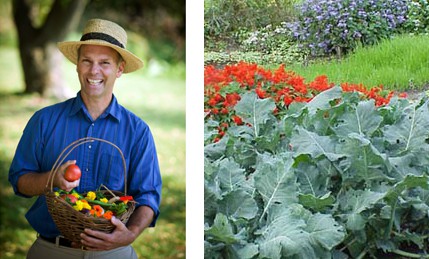
L: Charlie Nardozzi; R: Inter-planted flowers and veggies.
Photos: L: CharlieNardozzi.com; R: NGA Edible Landscaping on-line newsletter.
Some of Charlie’s first gardening memories go back to vegetable gardening with his Italian grandfather on his Connecticut farm. He fondly recalls harvesting the abundant fruits of the garden, and forgetting the countless hours of hot summer weeding and staking that the vegetables required. It is his early love of gardening and the natural world that inspires Charlie in his work as an educator. He seeks to provide gardening information that is useful and easy for people to understand and implement. You can catch Charlie on the Vermont Garden Journal on Vermont Public Radio, and In the Garden on WCAX TV.

L: An asparagus hedge; R: Blueberries are a staple in the edible landscaping palette.
Photos: L: National Gardening Association; R: Charlie Nardozzi.
Here are some edible landscaping tips from Charlie’s Edible Landscaping on-line newsletter:
- “Don’t be afraid to grow your edible flowers, shrubs and trees in the front yard where everyone can appreciate them.”
- “Grow thorny brambles, such as blackberries and red raspberries, along a fence or wall or as a hedge to keep cats, dogs, and wildlife out of your yard. The fruits on these bushes are attractive even if you don’t like the flavor. Birds and other wildlife will enjoy any you forget to harvest. Also, the foliage of some berry shrubs, such as blueberries, turn a brilliant color in the fall.” Another thing to try is an asparagus hedge like the one above.
- If you’re thinking of planting fruit trees, remember that, “Some types of fruit trees require at least two trees of different varieties in order to produce fruit. If you don’t have room for two or more trees, consider self-fruiting varieties such as ‘Northstar’ cherry… [Also] consider if the tree you’re growing typically drops lots of fruits and nuts, creating a mess under the tree. Place these trees away from decks, patios, and sitting areas so you won’t have any dropped fruits staining the wood or getting underfoot and attracting wasps and animals.”
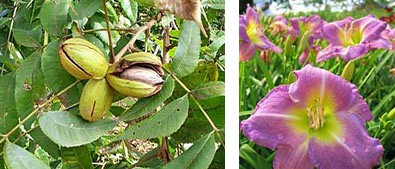
L: The fruits of a pecan tree; R Daylily blooms. Photos: Edible Landscaping primer.
- Don’t forget the flowers: edible flower delicacies abound in the garden—try nasturtiums to add a colorful, peppery kick to salads, or serve sautéed daylily buds as an unusual side dish. Some flowers even contain vitamins: Charlie writes, “Roses — especially rose hips — are very high in vitamin C; marigolds and nasturtiums also contain vitamin C; and dandelion blossoms contain vitamins A and C.”
- Just as vegetables have a place in the flower garden, flowers are welcome in the vegetable garden. Charlie writes, “I always include flowers in my garden, even if they aren’t edible, because they are beautiful to cut and bring indoors. Flowers also attract pollinating and beneficial insects to the garden.”
And there’s lots more to learn–be sure to visit Charlie’s website and the National Garden Association’s Edible Landscaping with Charlie Nardozzi page.
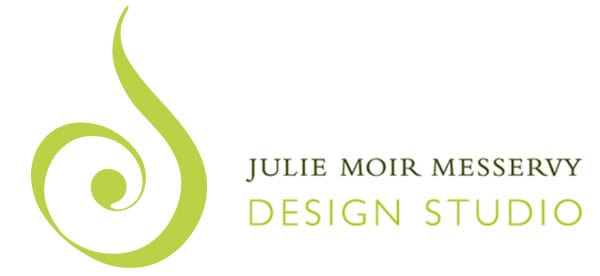
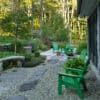
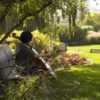
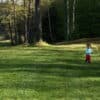

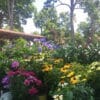
Great idaes. We put broccoli in our landscape beds but let some of it go to flower. The flowers are a beautiful pale yellow.
Love the idea of nibbling on flowers (day lilies are delicious, by the way)! When I was in my twenties, and we were camping in early spring and ran out of food so we ate salad that had dandelions and some grassy things in it! Those “weeds” were scrumptious (either that or we were simply too hungry?…)
An asparagus hedge–how marvelous and beautiful! And it sounds like something out of Alice in Wonderland.
i would love to see a nice write-up on medicinal plants – they are utterly amazing! Poor man’s pepper, for instance, can cure some cancers, and the juice inside a jewel weed’s stem takes good care of poison ivy and mosquito bites!
Good stuff Goombah !!!!!!!!!!!!!!
P.N.
I love the first photo where garden takes up most of the space and you can barely see the house. That’s what I am dreaming of – feeling like you live in the middle of the nature.
There’s a wealth of information here. I’ll be back again.
Good Article
Great post, and the pictures are beautiful! Keep up the great work!